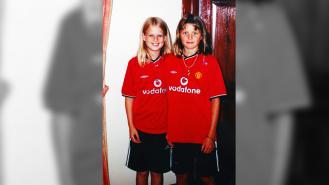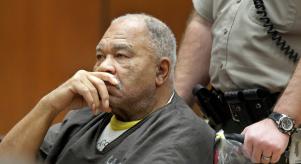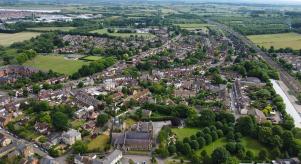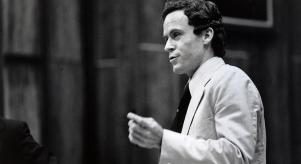
The murder of Billie-Jo Jenkins
Over two decades have passed since the nation was rocked by the brutal murder of 13-year-old Billie-Jo Jenkins. Since then, theories have abounded and the nation is still very much divided when it comes to who they believe killed her.
Billie-Jo Jenkins had a troubled upbringing and at the age of nine, she was fostered by Sion and Lois Jenkins, who had four daughters of their own, Esther, Maya, Lottie and Annie. She lived with the family in London and truly became an integral part of their lives. The family moved to a three-story Victorian house on Lower Park Road in Hastings, East Sussex, and Billie-Jo stayed in contact with her birth parents. She was a student at Helenswood Comprehensive School where she was known to be a well-liked and hard-working student. ‘Billie-Jo was a young lady in the old-fashioned sense of the word. It was rare to meet a young girl with such manners,’ fondly recalled one of her neighbours.
The 15th of February started out like any regular day for the Jenkins family. Lois, Esther and Maya were out shopping for the day while Sion, Lottie and Annie went to a local DIY store. Billie-Jo opted to stay home alone and paint the patio doors. When Sion and the girls returned home, they discovered the lifeless body of Billie-Jo in the back garden. She was surrounded in a puddle of her own blood with a paint pot and brush to the side. She had been beaten to death with an 18-inch iron tent peg which was found near her body. The attack had been a brutal and frenzied one using a tent peg that had come from the tool shed at the bottom of the garden. Billie-Jo had sustained severe head injuries. She hadn’t been sexually assaulted ruling out a sexual motivation. There was also no evidence that anybody had broken into the family’s home.
The police were immediately alerted to the crime scene. The murder inquiry was led by Detective Superintendent Jeremy Paine. He said: ‘The awful scene that confronted Mr Jenkins and his daughters is almost unimaginable.’ Police quickly announced that they were looking for a scar-faced man who was said to be lurking in the area, asking for accommodation, shortly before Billie-Jo was murdered. He was described as a white man standing at around five feet ten inches tall with wispy fair hair. He was carrying a Safeway plastic bag with a stick of French bread.
Sion also informed police that the family had been plagued by an unknown prowler in the preceding months. He said that around two weeks before Billie-Jo was murdered, he had disturbed a man in their back garden and a couple of weeks before that, he had spotted a man staring at the family’s home from Alexandra Park, which was directly opposite the house. Just the year beforehand, over 1,000 concerned locals had signed a petition calling for better security at Alexandra Park after there had been reports of drug dealing and men exposing themselves. The Jenkins family had been so spooked by this anonymous man as well as the fact that their side gate was discovered open on several occasions, they had installed security lighting.
Billie-Jo herself had even complained that she believed that she was being followed by somebody since around Christmas time. She had described the man who had been following her in extensive detail to her friends. He was a white man estimated to be in his 40s or 50s and always wore a leather jacket. The description of the man matched the description Sion gave of the man he had seen staring intently at the family’s home from Alexandra Park.
Around two years prior, Billie-Jo had also raised concerns that she was being stalked. Police were informed of her claims and Helenswood Secondary School were also made aware. In addition, she had received a number of strange phone calls wherein the person on the other end of the line hung up before speaking. Detective Superintendent Jeremy Paine stated: 'She had told her parents and friends she felt she was being followed and had spotted a man on some occasions. It appears that she felt this man was paying particular attention to her for some reason.'
Hastings was once a quaint holiday resort but over the years, it became run down. Hotels and bed and breakfasts were left abandoned and flats for patients released under the Care in the Community scheme began to pop up. Some neighbours of the Jenkins family said that there had been a spate of robberies as well as vandalism in the area. In fact, the house next door to the Jenkins’ home was derelict and boarded up; police announced that they were working on the theory that Billie-Jo’s killer had been hiding inside the abandoned house next door before he unleashed his attack when he knew that Billie-Jo was alone.
Sion and Lois would appear on national television to appeal for help in finding the killer of their daughter. Lois could barely contain her emotion as Sion read from a prepared statement:
'As a family, we are totally devastated. We do not understand why or what the motive was but we are working closely with police in the hope that the killer will be found, and that we can eventually piece our lives back together over the coming years. Billie-Jo was loving and supportive of her four sisters. She was also buoyant, articulate, quick to learn, loud and fun-loving. As parents, our sadness drives us to work closely with the police to find her killer. We, therefore, appeal to anyone who thinks they have any information about this crime to contact the police.'
Just days after the murder, a 44-year-old man was arrested in connection. The man who had been arrested had a large birthmark on his face and was said to be the same man who had been spotted in the area asking about accommodation shortly before Billie-Jo was attacked. However, shortly thereafter, the man would be released from police custody into secure psychiatric care and he was ruled out as a suspect. A couple of days later, a second man was arrested in connection with Billie-Jo’s murder but the following day, he too was released from police custody.
On the 24th of February, there was an unexpected twist in the case when it was announced that Sion had been arrested in relation to Billie-Jo’s murder. Sion strongly denied that he was involved in his daughter’s murder but three weeks later, he was charged with her murder. He was additionally charged with “dishonestly obtaining a pecuniary advantage.” An investigation into his background had uncovered that he had falsely represented his educational qualifications and teaching experience to secure his job as deputy headmaster of William Parker School. He would be ordered to stand trial at Lewes Crown Court in June of 1998.
During the trial, the prosecution suggested that Sion had beaten Billie-Jo to death after a day of “frustrating and irritating events” but said that the true motivation may never be known. Camden Pratt, QC, said that after killing Billie-Jo, Sion had then gone to a local DIY store with his two daughters in an attempt to distance himself from the murder before pretending to find Billie-Jo’s body when he returned home.
The case against Sion was built on 139 small blood spots which were found on his clothing. According to the prosecution, the blood resulted from an impact spatter which had come from Sion hitting Billie-Jo with the iron tent peg. According to the defence, however, the blood had come from air being released from Billie-Jo’s lungs as Sion moved her after finding her body in the garden. The defence would present an experiment to try and show that Sion could have been sprayed with Billie-Jo’s blood. The prosecution would call Dr Ian Hill to counter this experiment. According to the pathologist, their experiment was “quite unrealistic” because the amount of air they had used was much greater than for a normal adult breathing.
Sion Jenkins would be found guilty of the murder of Billie-Jo Jenkins and sentenced to life in prison.
In 1999, Sion appealed his conviction, claiming that the forensic evidence in the case was “inaccurate” and that the verdict should be quashed. He would lose the appeal but in May of 2003, after a two-year investigation headed by the Criminal Cases Review Commission, the case was transferred back to the Court of Appeal. The Criminal Cases Review Commission noted that the jury did not hear from Sion’s other daughters who corroborated his story. During the original trial, police had been told by Lois – who by this point had divorced Sion – that their four daughters had changed their original stories, which backed up their father’s denial of murder. While at the 2003 appeal, Annie and Charlotte's testimony supported the defence’s case that their father would not have had time to commit the murder.
During the retrial, the forensic evidence from the first trial was scrutinised. Forensic experts testified that the blood found on Sion’s clothing could have gotten there as he comforted Billie-Jo during her dying moments. The basis of Dr Ian Hill’s opinion had come from the fact that there was only a blockage in Billie-Jo’s lower airway. However, it had since been discovered that the blockage was, in fact, in her upper airways.
After a three-month retrial, the jury was unable to reach a verdict. A second re-trial was called and in February of 2006, they too were unable to reach a verdict. Sion Jenkins was declared in consequence not guilty and the Crown Prosecution Service would subsequently formally acquit him of the murder.
Over the years, many people have called for the murder case to be re-opened, especially considering the advancements of DNA technology. While the case remains unsolved, Sussex Police have said that if any new information may arise, it would be assessed and investigated if necessary.









